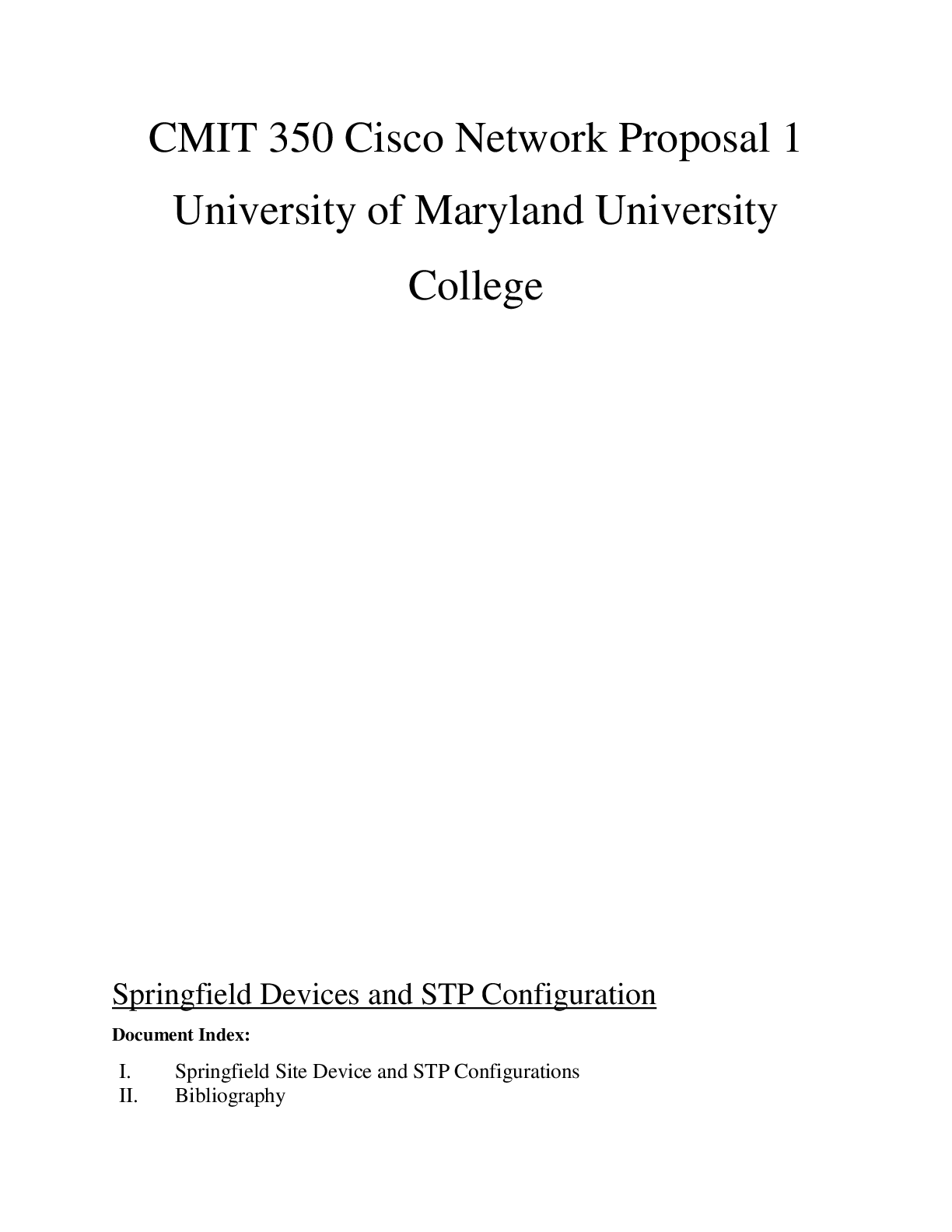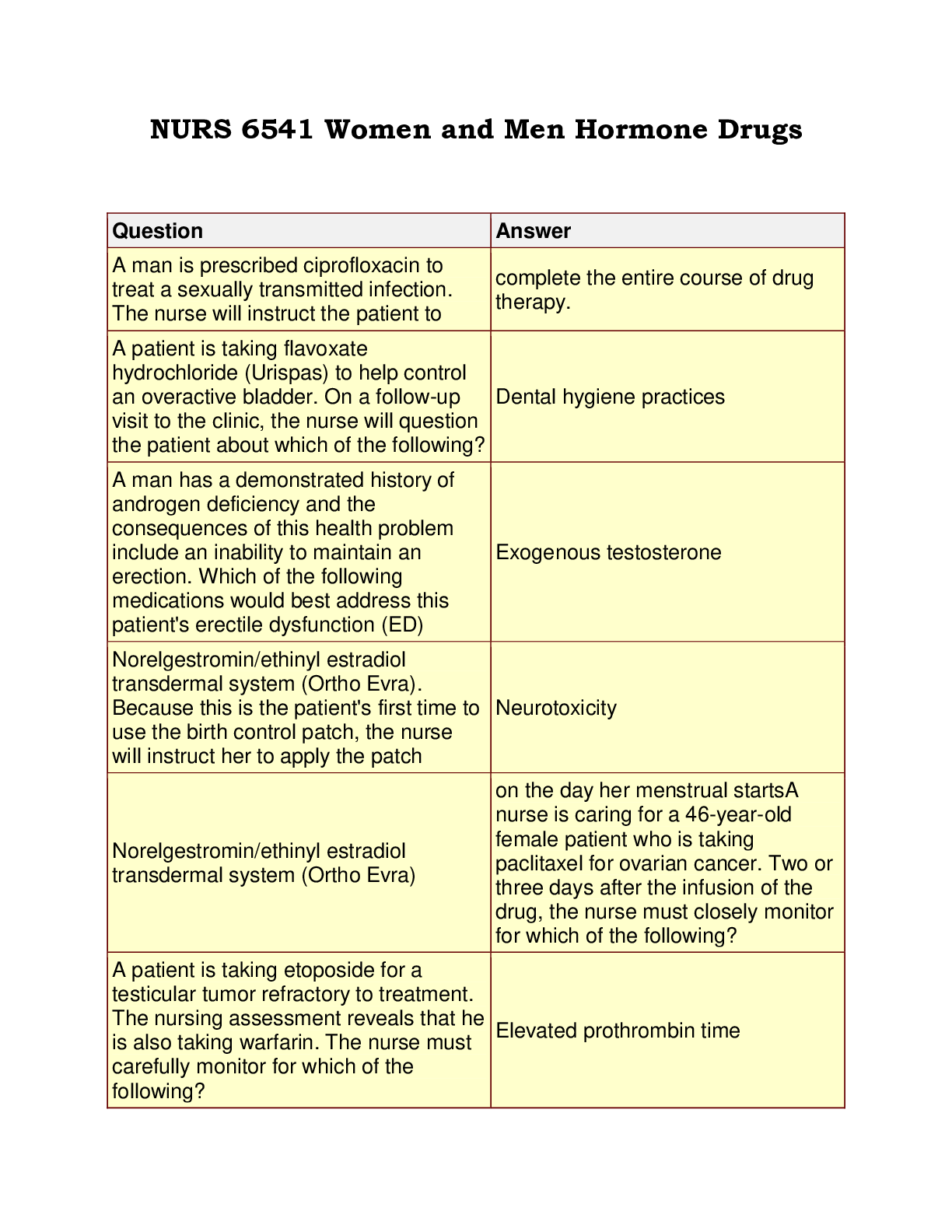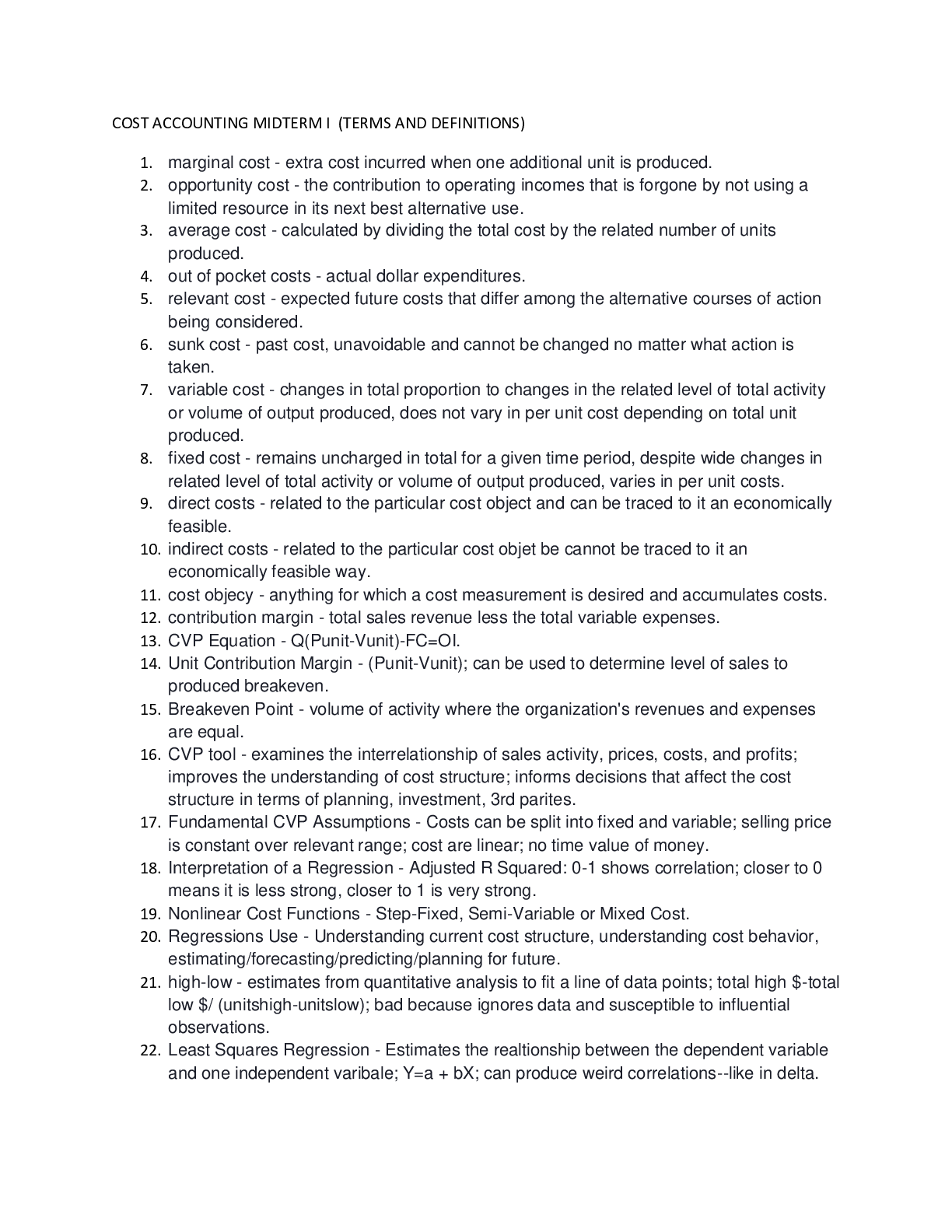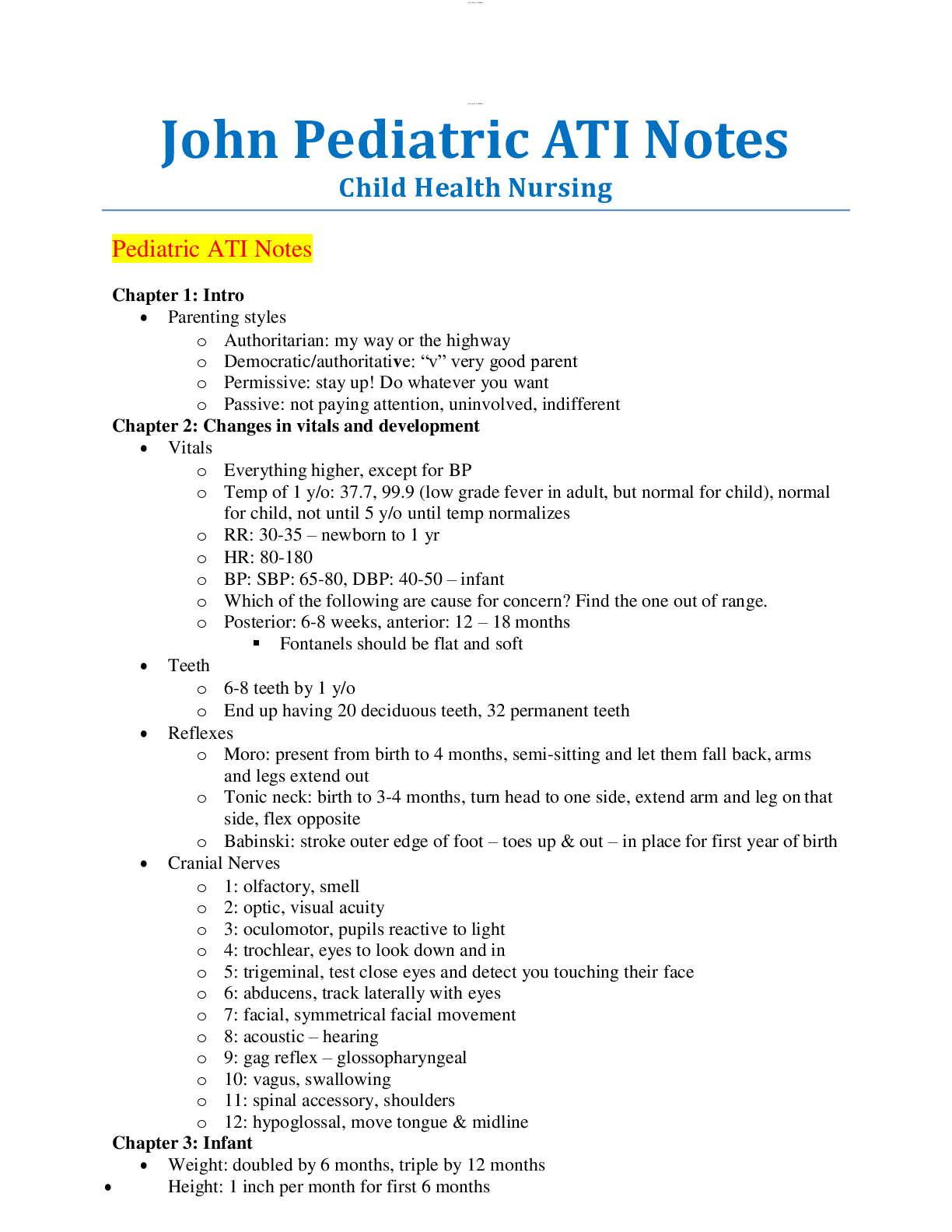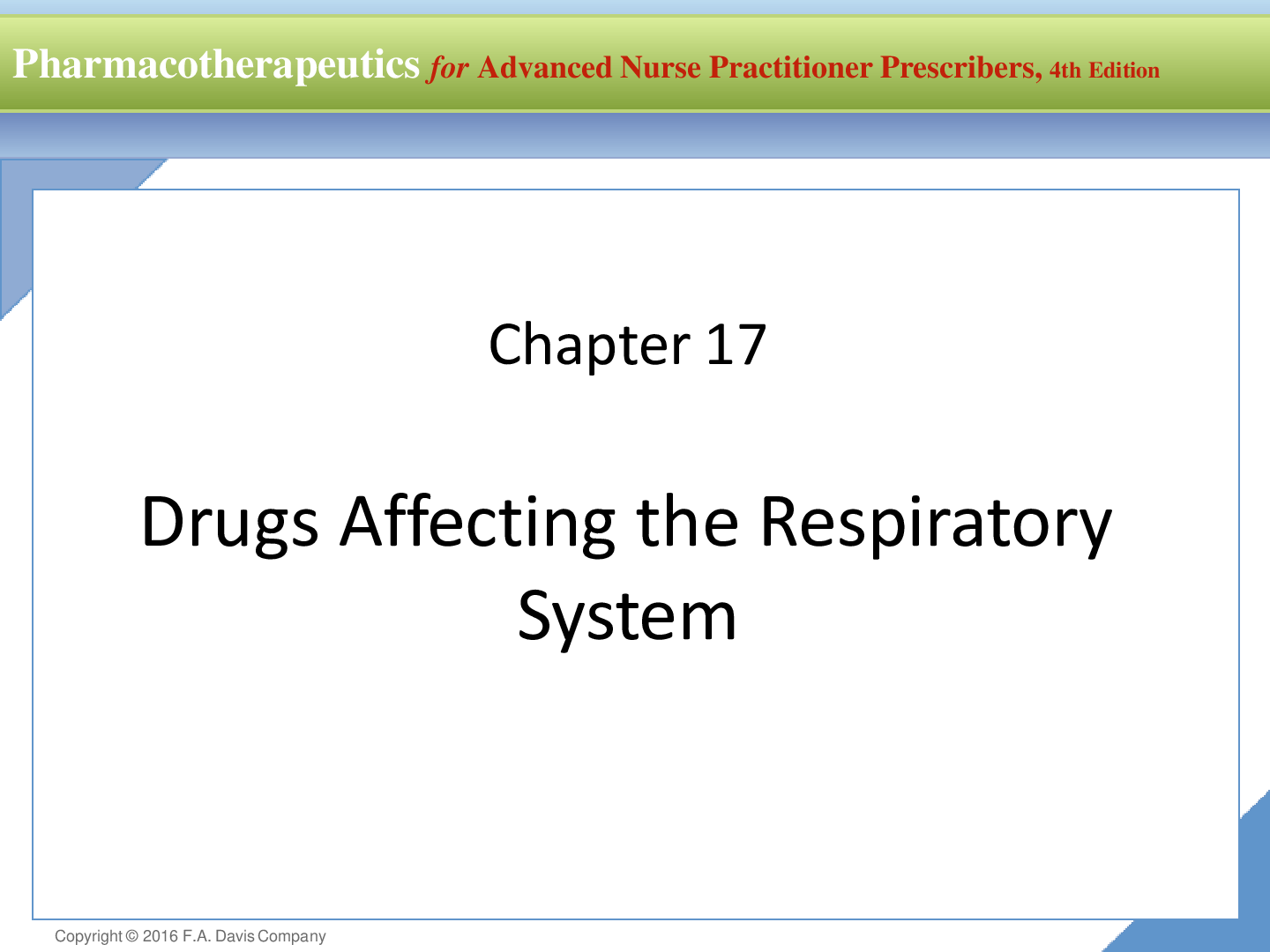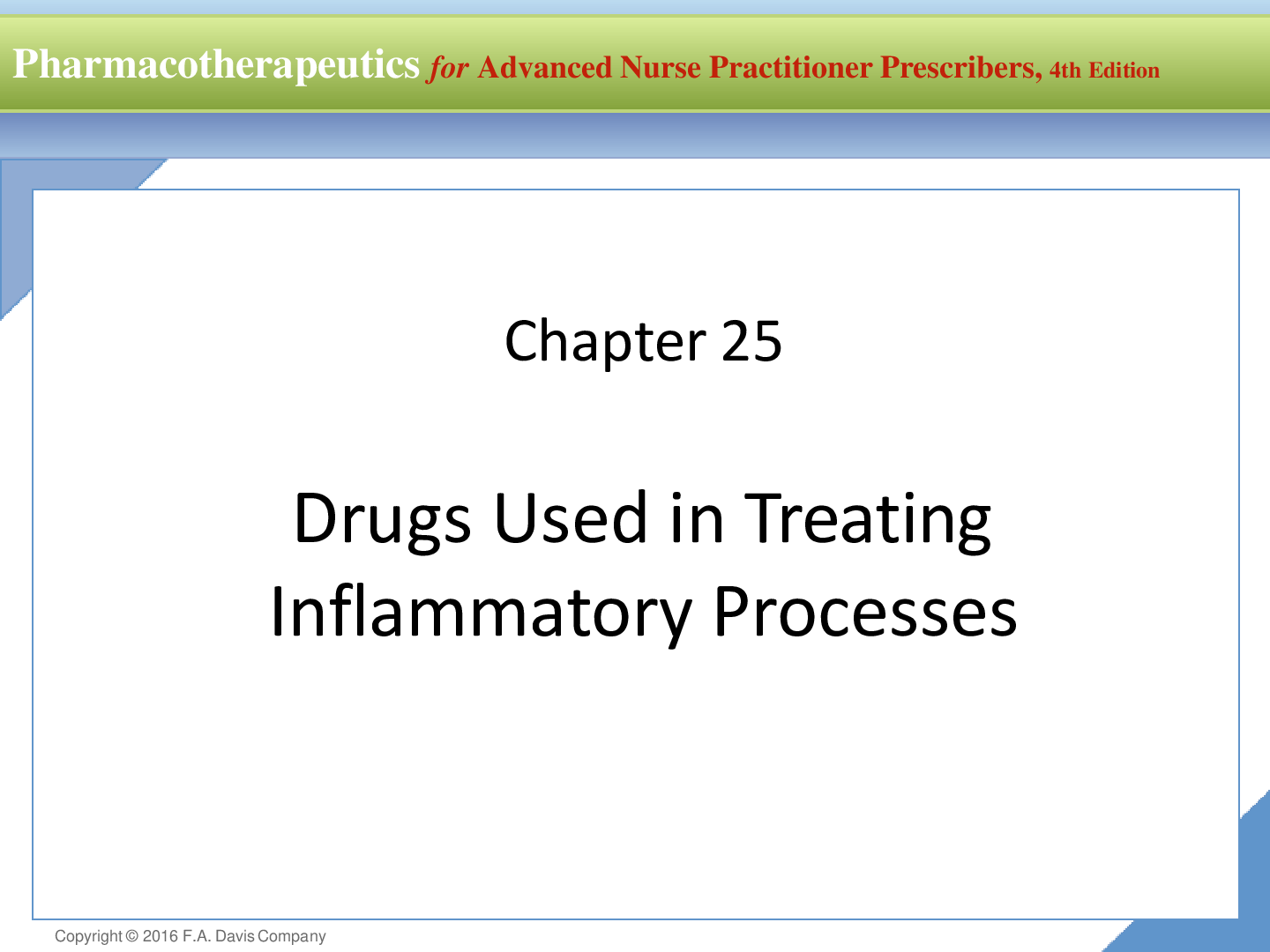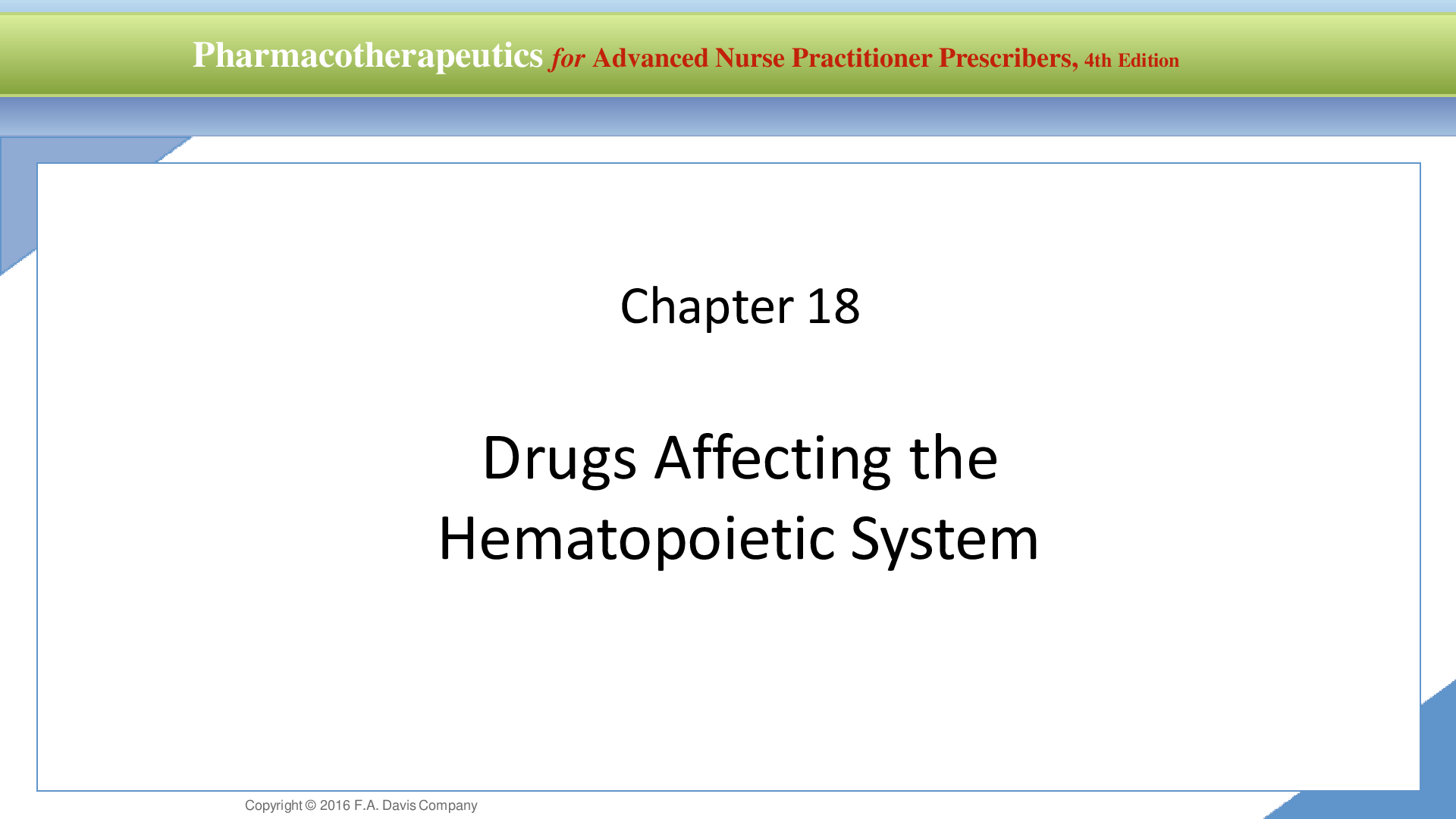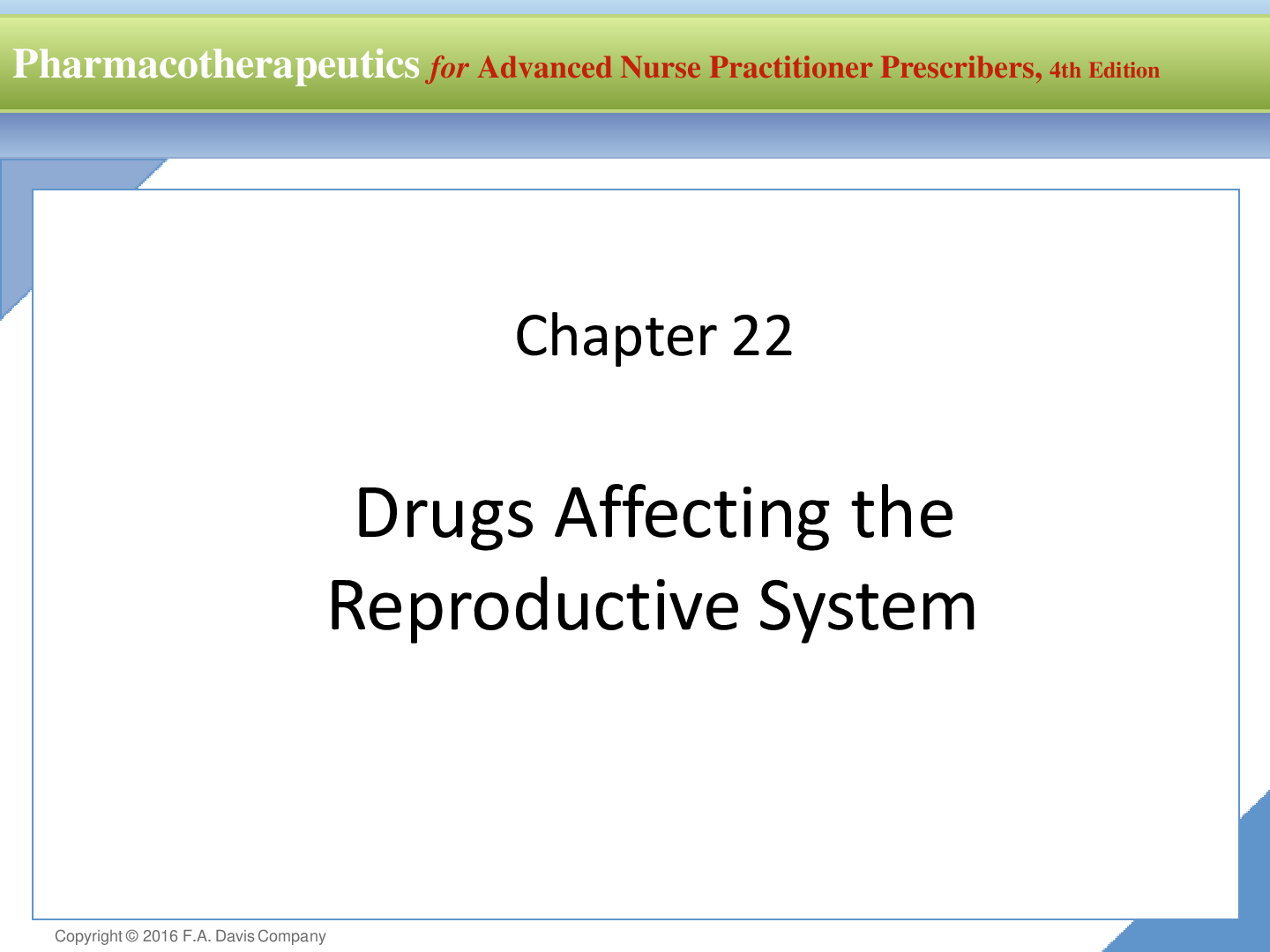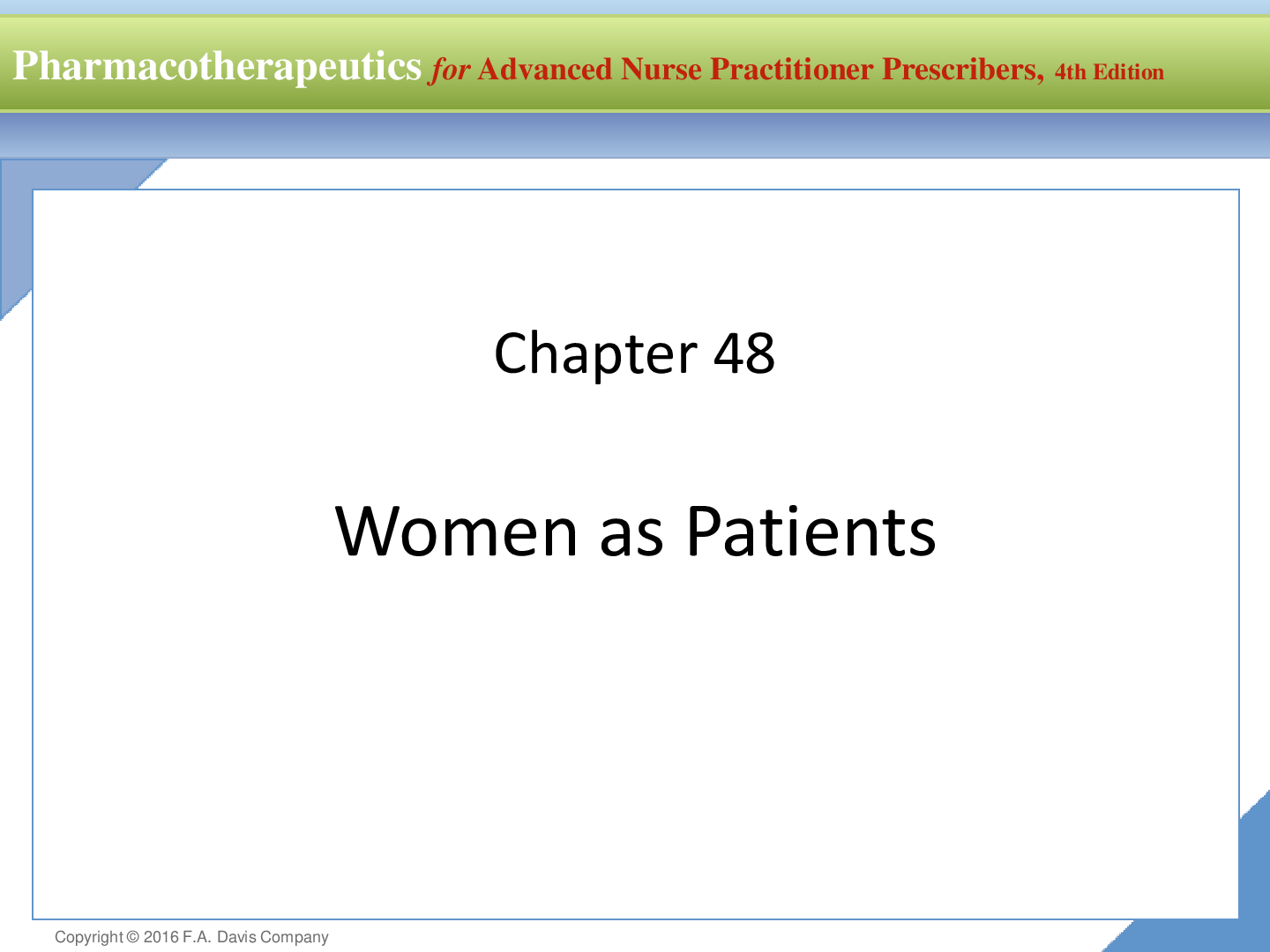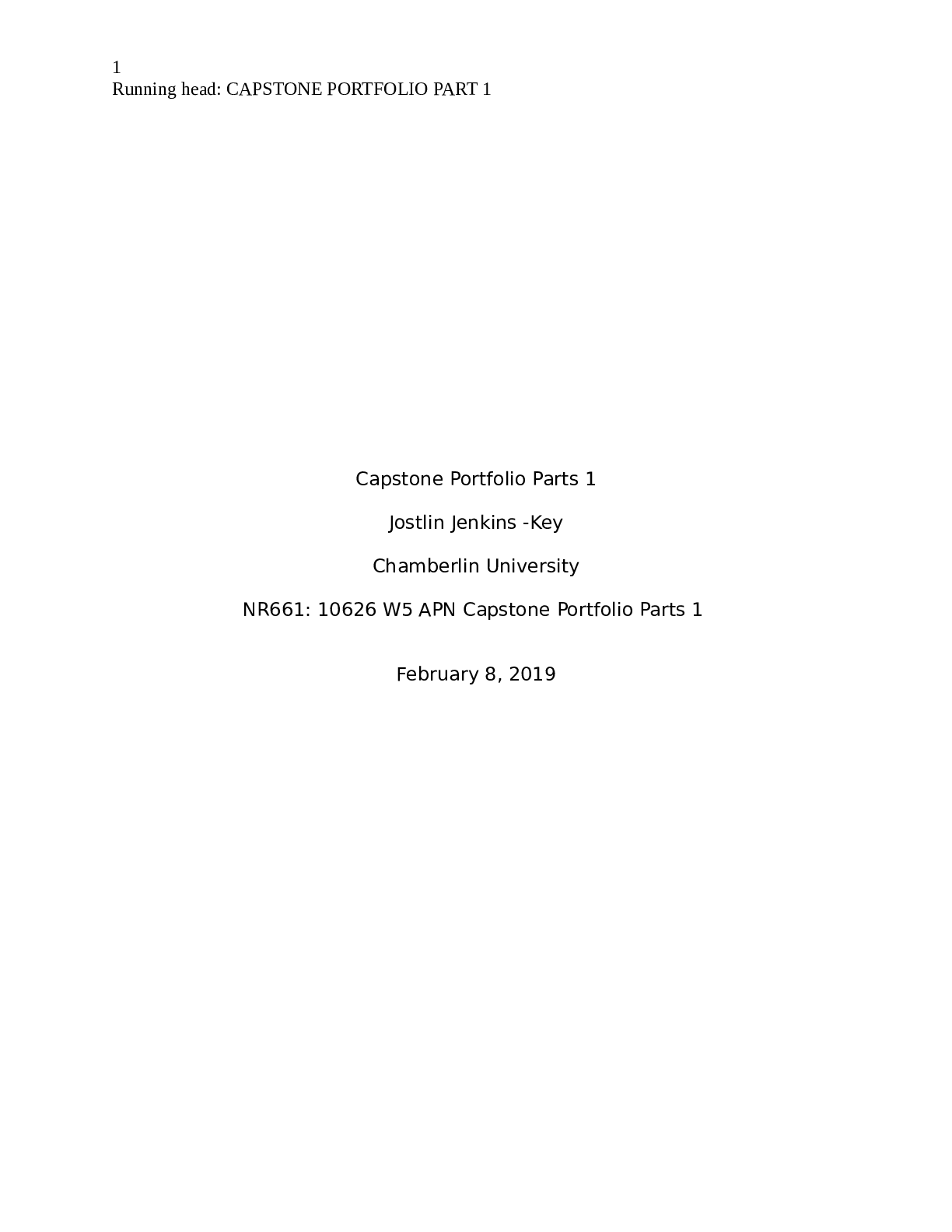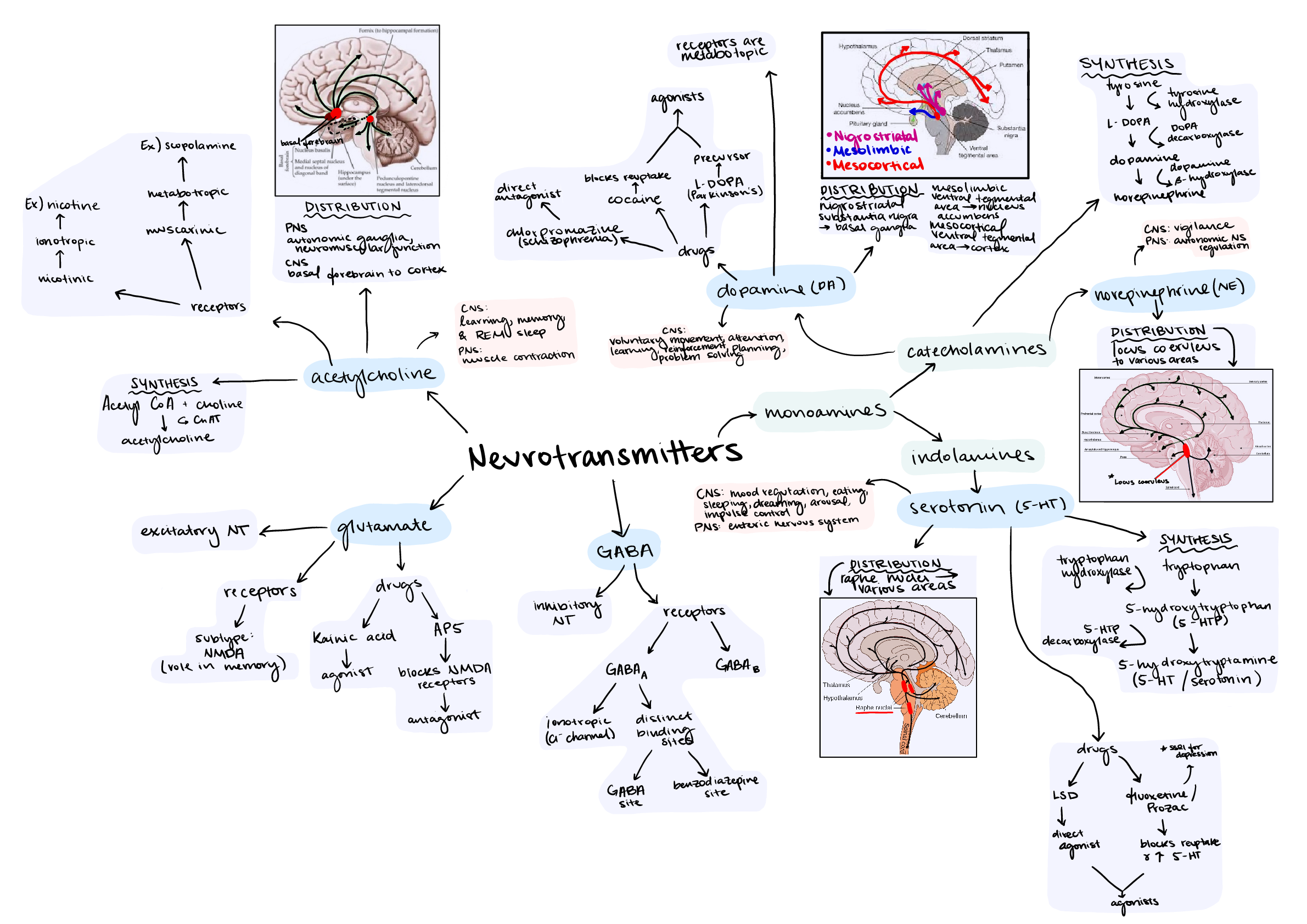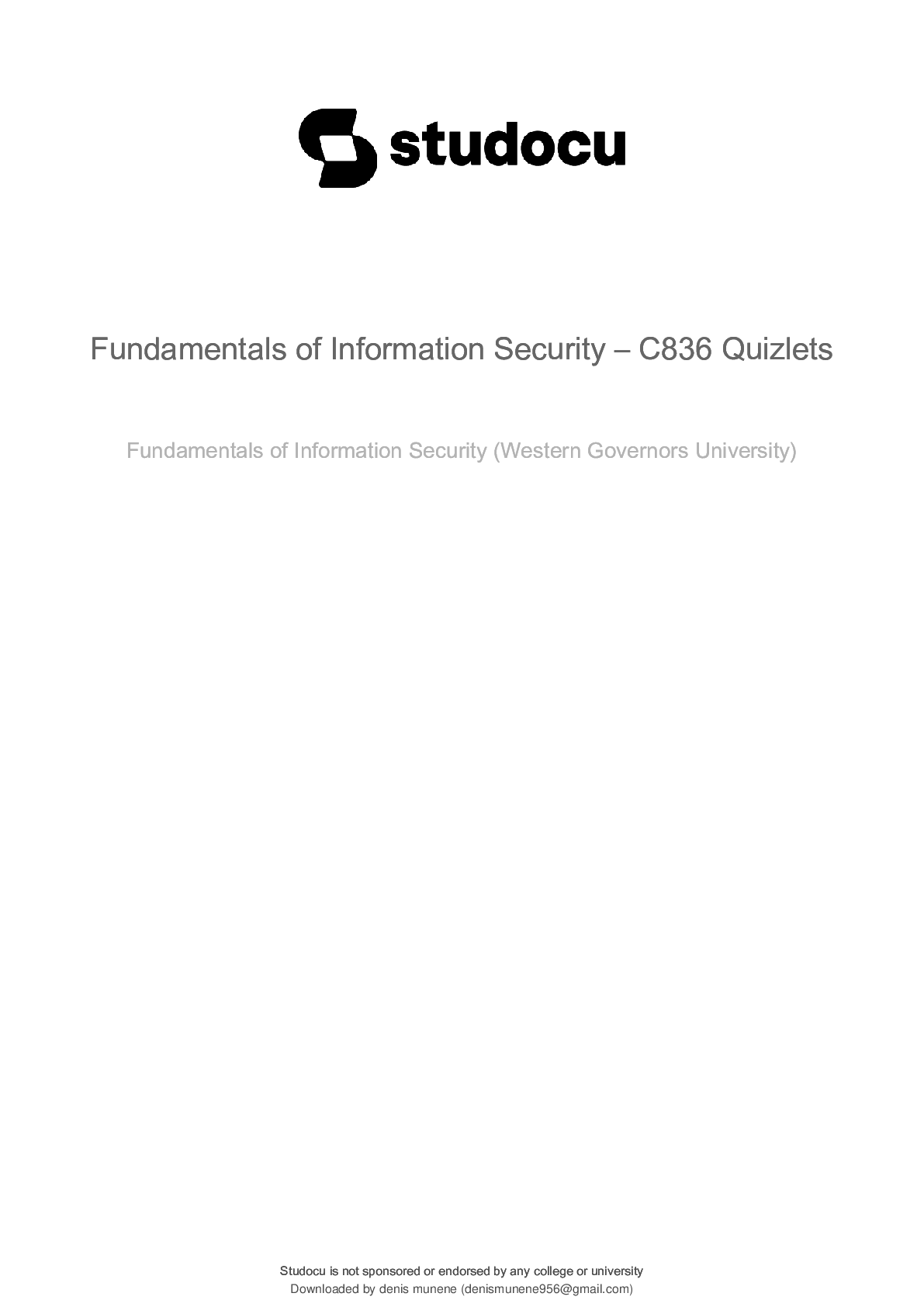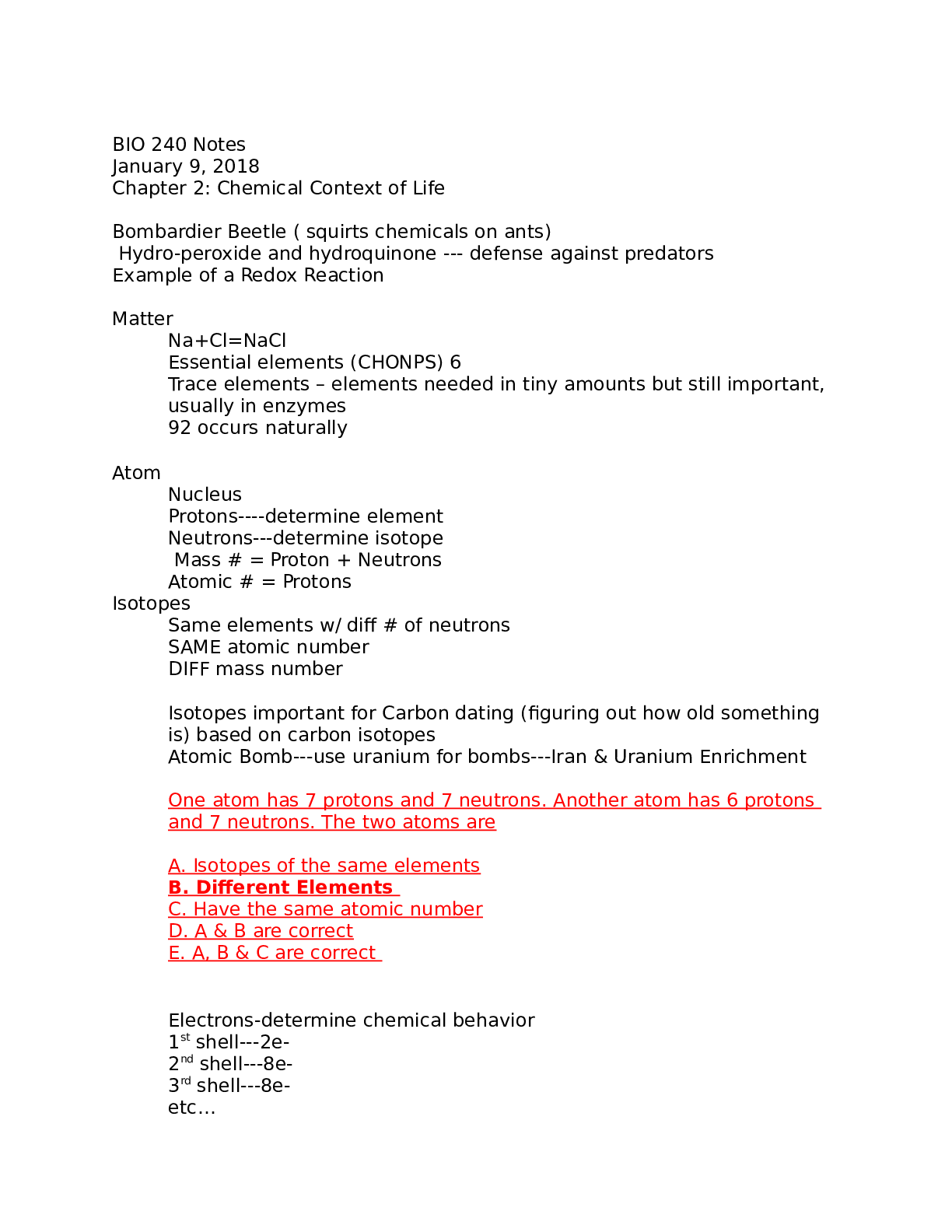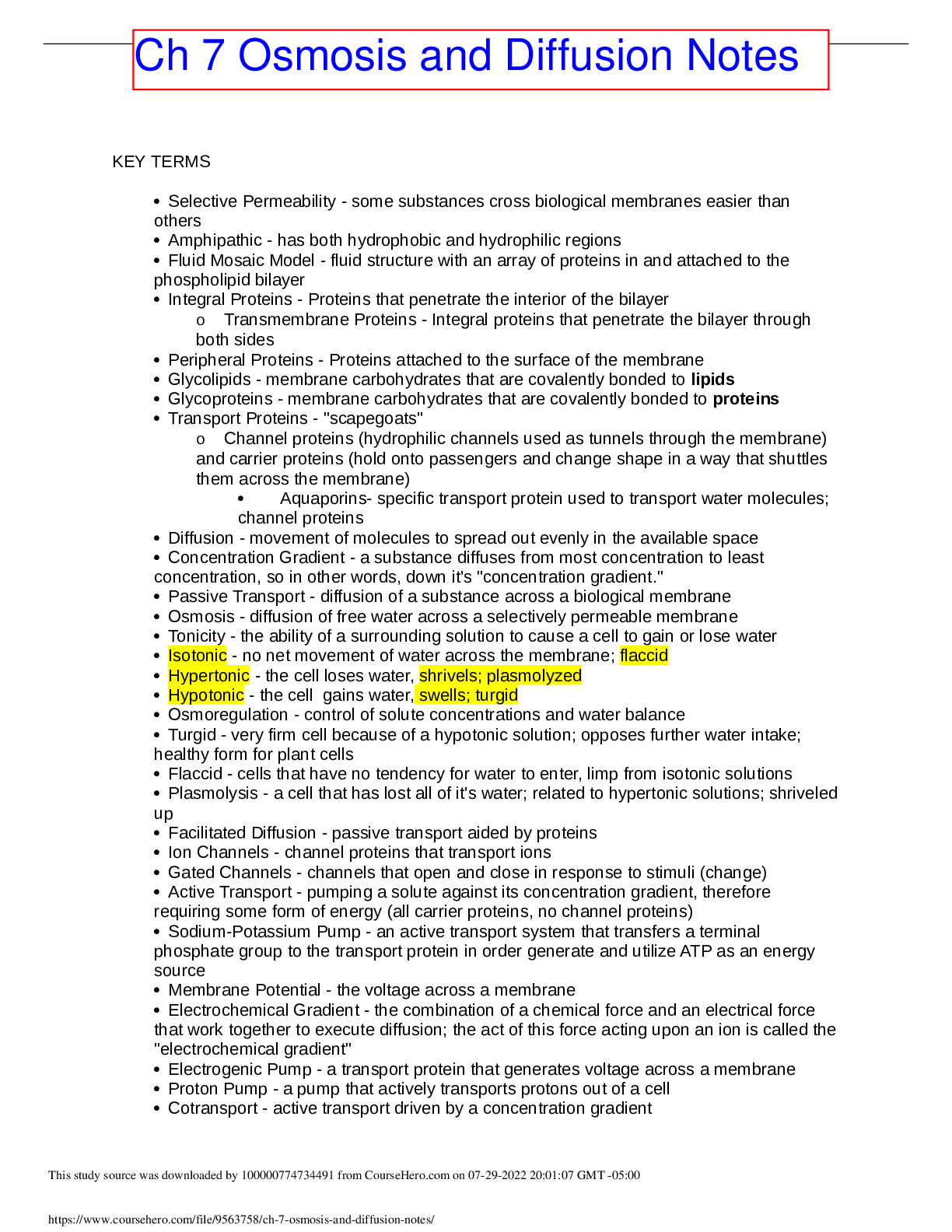*NURSING > Class Notes > NURSING NR 226 EXAM 3 PP NOTES Chapter 37 (All)
NURSING NR 226 EXAM 3 PP NOTES Chapter 37
Document Content and Description Below
Scientific Knowledge Base: Loss • Illness’s effect on a person can change their functioning and therefore their job, family role, income level, and overall quality of life. • [Review Table 3... 7-1, Types of Loss, with students.] • As people age, they learn that change always involves a necessary loss. They learn to expect that most necessary losses are eventually replaced by something different or better. • A maturational loss is a form of necessary loss and includes all normally expected life changes across the life span. Maturational losses associated with normal life transitions help people develop coping skills to use when they experience unplanned, unwanted, or unexpected loss. • Sudden, unpredictable external events bring about situational loss. • Losses may be actual or perceived. • An actual loss occurs when a person can no longer feel, hear, see, or know a person or object. • A perceived loss is uniquely defined by the person experiencing the loss and is less obvious to other people. dementia or severe brain injury. • In complicated grief, a person has a prolonged or significantly difficult time moving forward after a loss. He or she experiences a chronic and disruptive yearning for the deceased; has trouble accepting the death and trusting others; and/or feels excessively bitter, emotionally numb, or anxious about the future. • A person with chronic grief experiences a normal grief response except it extends for a longer period of time. • A person with an exaggerated grief response often exhibits self-destructive or maladaptive behavior, obsessions, or psychiatric disorders. Suicide is a risk for these individuals. • A person’s grief response is unusually delayed or postponed because the loss is so overwhelming that the person must avoid the full realization of the loss. • Masked grief is when a grieving person behaves in ways that interfere with normal functioning but is unaware that the disruptive behavior is a result of the loss and ineffective grief resolution Theories of Grief and Mourning • Grief theorists describe the physical, psychological, and social reactions to loss. • Criticism exists for the stages and task theories because they fail to capture the complexity and diversity of the experience. • The more recent grief theories take into consideration that human beings construct their own experiences and truths differently and make their own meanings when confronted with loss and death. • No one’s grief follows a predetermined path, nor is it linear. Grief is cyclical with movement forward and backwards. • Educating grievers about the cyclical pattern of grief work prepares them for difficult days among the better days. Knowing that these feelings will come and go help the griever to be prepared for them and allow for the necessary self-care. Nursing Knowledge Base • Nurses need to develop a plan of care to assist patients and family members who undergo loss, grief, or death experiences • When the goals of care change and cure for illnesses becomes less likely, the focus shifts to more palliative care strategies and ideally transition to hospice care, a more specialized form of palliative care for the dying. • Hospice care is a philosophy and model for the care of terminally ill patients and their families at the end of life. It gives priority to managing a patient’s pain and other symptoms; comfort; quality of life; and attention to physical, psychological, social, and spiritual needs and resources. • The cornerstone of hospice care is trusting relationship between the hospice team and the patient and family. Knowing expectations, desired location of care, and family dynamics help the hospice team provide individualized care at the end of life. • Unlike traditional care, hospice patients are active participants in all aspects of care, and caregivers prioritize care according to patient wishes. • Hospice programs are built on the following core beliefs and services: • Patient and family are the unit of care. • Coordinated home care wit • When given a rationale for preoperative and postoperative procedures, patients are better prepared to participate in care. Patients who undergo ambulatory surgery need to learn how their instructions and exercises will promote healthy recovery, prevent complications, and allow them to return to a normal lifestyle as soon as possible. Patients who undergo inpatient surgery, need to understand what is required to facilitate their recovery, including pain control, anticipated activity level, diet progression, wound care, and the need to be able to perform postoperative exercises, which help to prevent pulmonary and vascular complications. • [Review Skill 50-1, Demonstrating Postoperative Exercises, with students.] • Explain the preoperative routines that a patient will undergo. Knowing which tests and procedures are planned and why increase a patient’s sense of control. • After the surgeon explains the basic purpose of a surgical procedure and its steps, some patients ask you additional questions. First, clarify with the patient what was discussed with the surgeon. If a patient has little or no understanding about the surgery, notify the surgeon that the patient requires further explanation. Avoid saying anything that contradicts the surgeon’s explanation. You can augment the surgeon’s explanations. • Emphasize that the scheduled time is a rough estimate and the actual time can be sooner or later. Make the family aware that delays do not necessarily indicate a problem. Communicate excessive delays when they do occur. • Few patients are admitted to a hospital unit prior to surgery, unless their case is emergent or unless a complication develops during hospitalization. When surgery is elective, patients and families will first come to the surgical center admission area. There, the patient will learn the likely unit he or she will be in following recovery. The family needs to know where the patient will be after surgery. Be sure to explain where the family can wait and where the surgeon will attempt to find family members after surgery. Many institutions have programs where the circulating nurse gives periodic reports to the family in the waiting room for surgeries that are expected to be prolonged. • If patients understand the type and frequency of anticipated monitoring and procedures, they are less apprehensive when nurses perform care activities. • Provide patients with information about the sensations typically experienced after surgery. Preparatory information helps them anticipate the steps of a procedure and thus form realistic images of the surgical experience. Postoperative sensations to describe include blurred vision from ophthalmic ointment in the eyes, expected pain at the surgical site and in areas of the body affected by prolonged positioning, the tightness of dressings, dryness of the mouth, and the sensation of a sore throat resulting from an endotracheal tube. • The type of surgery that patients undergo determines how quickly they can resume normal physical activity and regular eating habits. It is normal in most surgical cases for patients to progress gradually in activity and eating. • Inform the patient and family of the need to manage pain so patients can resume activity and the type of therapies likely to be used for pain relief. Patient-controlled analgesia (PCA) is common and provides patients with control over pain. Explain and demonstrate to a patient how to operate a pump and the importance of administering medication as soon as pain becomes persistent. Pain relief has been shown to be more effective when analgesics are given around-the-clock (ATC) rather than as needed (prn). • Rest is essential for normal healing. Meet each patient’s individual needs, giving them time to ask questions so that anxiety can be minimized. If the patient is in the hospital, make the environment quiet and comfortable. • Some patients feel like part of an assembly line before surgery. Frequent visits by staff, diagnostic testing, and physical preparation for surgery consume time; and the patient has few opportunities to reflect on the experience. Recognize the patient as a unique individual. Preoperative Surgical Phase: Implementation (Cont.) • Acute care activities in the preoperative phase focus on the physical preparation of a patient on the morning of surgery or prior to an emergent surgery. • A surgical site infection (SSI) is one of the National Quality Forum-endorsed patient safety measures that hospitals are encouraged to report. Centers for Medicare and Medicaid Services (2010) no longer pays a higher reimbursement for hospitalizations complicated by certain types of surgical site infections if they were not present on admission. As a result, there is great emphasis within hospitals for preventing the occurrence of SSIs. • Antibiotics may be ordered in the preoperative period. A reduction in wound infection rates occurs when an antibiotic is administered 60 minutes before the surgical incision is made and the antibiotics are stopped within 24 hours after surgery. • Preoperative care involves skin antisepsis to reduce the risk of a patient developing a SSI by removing soil and transient micoorganisms at the surgical site. • Current evidence supports leaving hair at the surgical site in place unless the hair interferes with exposure, closure or dressing of the surgical site. When hair removal is required, clipping the hair is likely to result in less SSI than removal with a razor. • A surgical patient is vulnerable to fluid and electrolyte imbalance as a result of the stress of surgery, inadequate preoperative intake, and the potential for excessive fluid losses during surgery. The American Society of Anesthesiologists (ASA) has recommendations on fluid and food intake before non-emergent procedures requiring general and regional anesthesia or sedation/analgesia. These recommendations include fasting from intake of clear liquids for 2 or more hours, breast milk for 4 hours, formula and nonhuman milk for 6 hours, and a light meal of toast and clear liquids for 6 hours. A patient also cannot have any meat or fried foods 8 hours before surgery, unless explicitly specified by the anesthesiologist or surgeon. Despite the ASA standards, many surgeons still have patients maintain nothing by mouth after midnight. Ensure that you follow the healthcare provider’s orders. Notify the surgeon and anesthesia provider if the patient eats or drinks during the fasting period. If a patient cannot eat because of gastrointestinal (GI) alterations or impairments in consciousness, you will probably start an IV route for fluid replacement. Patients with severe nutritional imbalances sometimes require supplements with concentrated protein and glucose such as total parenteral nutrition. • Some patients receive a bowel preparation (such as a cathartic or enema) if the surgery involves the lower GI system. An empty bowel reduces risk of injury to the intestines and minimizes contamination of the operative wound if colon surgery is planned or a portion of the bowel is incised or opened accidentally. In addition, cleansing of the bowel reduces postoperative constipation. Too many enemas given over a short time can cause serious fluid and electrolyte imbalances. Most agencies limit the number of enemas (usually three) that a nurse may administer successively. Preoperative Surgical Phase: Implementation (Cont.) • Basic hygiene measures provide patients additional comfort before surgery. • During major surgery an anesthesiologist positions a patient’s head to place an endotracheal tube into the airway. • This involves manipulation of the hair and scalp. To avoid injury ask the patient to remove hairpins or clips before leaving for surgery. Electrocautery is frequently used during surgery. Hairpins and clips can become an exit source for the electricity and cause burns. Remove hairpieces or wigs as well. Patients can braid long hair and wear disposable hats to contain hair before entering the OR. When using a pulse oximeter, have patients remove all makeup (lipstick, powder, blush, nail polish) and at least one artificial fingernail to expose normal skin and nail color. Anything in or around the eye irritates or injures the eye during surgery. Have patients remove contact lenses, false eyelashes, and eye makeup. Give the patient’s eyeglasses to the family immediately before the patient leaves for the OR. Document all valuables per agency policy. • It is easy for any type of prosthetic device to become lost or damaged during surgery. Have patients remove all removable prosthetics for safekeeping just before leaving for surgery. Place prostheses in a secured area or give them to family members. Document per agency policy. • If a patient has valuables, give them to family members or place in a secure designated location. Prepare a list with a description of items, place a copy with a patient’s medical record (see agency policy), and give a copy to a designated family member. Patients are often reluctant to remove wedding rings or religious medals. A wedding band can be taped in place, but this is not the preferred practice. Many hospitals allow patients to pin religious medals to their gowns, although the risk of loss increases. Remove other metal items such as piercings to reduce risk of burns. • Some patients receive an enema or cathartic the morning of surgery. If so, give at least 1 hour before a patient leaves for surgery, allowing time for a patient to defecate without rushing. • The surgeon may order insertion of an indwelling catheter if the surgery is to be long or the incision is in the lower abdomen. • Monitor preoperative vital signs before surgery. The anesthesia provider uses these values as a baseline for intraoperative vital signs. If preoperative vital signs are abnormal, surgery may need to be postponed. Notify the surgeon of any abnormalities before sending the patient to surgery. • Hospitals have made the prevention of deep vein thrombosis (DVT) a priority quality measure. When correctly sized and applied, antiembolism devices such as antiembolism stockings reduce the risk for DVT. • The anesthesia provider or surgeon may order preanesthetic drugs to reduce patient anxiety; the amount of general anesthesia required; respiratory tract secretions; and the risk of nausea, vomiting; and possible aspiration. Complete all nursing care measures before administering these medications. Preoperative drugs can cause dry mouth, drowsiness, and dizziness. If drowsiness or dizziness occurs, keep side rails in the up position, the bed in the low position, and the call bell within easy reach for the patient. Be sure the patient has signed surgical consent before administering drugs that will alter consciousness. • Before the patient goes to the OR, an accurate medical record is essential to ensure safe and appropriate patient care. Check the contents of the medical record for accuracy and completeness. The transfer of information about the patient from one health care provider to another requires an effective hand-off. The Association of perioperative Registered Nurses (AORN) and TJC (2015) recommend time-outs for safe surgery briefings during a pre- to intraoperative hand off. This ensures that the right patient receives the right surgery and at the right surgical site. • [Review Box 50-5, Example of Elements of a Preoperative to Intra-operative Handoff Using SBAR Communication, with students.] • Implement the Universal Protocol whenever an invasive surgical procedure is to be performed, no matter the location. The three principles of the protocol are: (1) a preoperative verification that ensures that all relevant documents and results of laboratory tests and diagnostic studies are available before the start of the procedure and that the type of surgery scheduled is consistent with the patient’s expectations; (2) marking the operative site with indelible ink to mark left and right distinction, multiple structures, and levels of the spine; and (3) a “time out” just before starting the procedure for final verification of the correct patient, procedure, site, and any implants. The marking and “time out” most commonly occur in the holding area, just before the patient enters the OR. The individual performing surgery and who is accountable for it, must personally mark the site and the patient must be involved if possible. Preoperative Surgical Phase: Evaluation • The nurse caring for the patient in the preoperative area evaluates initial patient outcomes. Compare the patient’s current status with expected outcomes to determine whether new or revised interventions and/or nursing diagnoses need to be implemented intraoperatively. • [Review Figure 50-4, Nursing Diagnostic Process: Fear Related to Knowledge Deficit and Previous Surgical Experience, with students.] • During evaluation, include a discussion of any misunderstandings so patient concerns can be clarified. When patients have expectations about pain control, this is a good time to reinforce how it will be managed after surgery. • Evaluate the patient’s response to interventions designed for preoperative nursing diagnoses such as deficient knowledge or anxiety. Observe the patient’s behaviors and discuss concerns to see if anxiety has been relieved. Be thorough in your evaluation to determine if further instruction or emotional support is needed after surgery. • Interventions continue during and after surgery; thus the evaluation of many goals and outcomes does not occur until after surgery. Transport to the Operating Room • Personnel in the OR notify the nursing unit or ambulatory surgery area when it is time for surgery. • In many facilities, a nursing orderly or transporter brings a stretcher for transporting the patient. The transporter checks the patient’s identification bracelet for two identifiers (name, birth date, or hospital number) (refer to institutional or agency policy) against the patient’s medical record to ensure the correct person is going to surgery. • Because some patients receive preoperative sedatives, the nurses and transporter help the patient transfer from bed to stretcher to prevent falls. • The ambulatory surgery patient ambulates to the OR if able and not medicated. • Provide the family an opportunity to visit before the patient is transported to the OR. • Direct the family to the appropriate waiting area. • If a patient has been hospitalized before surgery and will be returning to the same nursing unit, prepare the bed and room for the patient’s return. Preanesthesia Care Unit • In most hospitals, a patient enters a preanesthesia care unit (PCU) or presurgical care unit (PSCU) (sometimes called the holding area) outside the OR, where preoperative preparations are completed. • Nurses in the PCU are members of the OR staff and wear surgical scrub suits, hats, and footwear in accordance with infection control policies. In some ambulatory surgical settings, a perioperative primary nurse admits the patient, circulates for the operative procedure, and manages the patient’s recovery and discharge. • If an IV catheter is not already present, a nurse or anesthesia provider inserts one into a vein to establish a route for fluid replacement, IV drugs, or blood products. • The nurse also administers preoperative medications and/or begins conscious sedation at this time. • The nurse monitors vital signs, including pulse oximetry. • The anesthesia provider usually performs a patient assessment at this time. Because of the preoperative medications, explain to the patient that he or she will begin to feel drowsy. • The temperature in the PCU and adjacent OR suites is usually cool, so offer the patient an extra blanket. The patient will stay in the PCU only briefly. Intraoperative Surgical Phase • There are two traditional nursing roles in the OR: circulating nurse and scrub nurse. • The circulating nurse is an RN who remains unscrubbed and uses the nursing process in the management of patient care activities in the OR suite. The circulating nurse also manages patient positioning, antimicrobial skin preparation, medications, implants, placement and function of intermittent pneumatic compression (IPC) devices, specimens, warming devices, and surgical counts of instruments and dressings. • The scrub nurse is either an RN or surgical technologist who is often certified (CST). The scrub nurse must have a thorough knowledge of each step of a surgical procedure and the ability to anticipate each and every instrument and supply needed by the surgeons. • A circulating nurse and scrub nurse partner together to ensure patient safety by minimizing risk of error. The team also works together to ensure cost-efficient use of supplies. • A new role in the OR includes the registered nurse first assistant (RNFA). This is an expanded role that requires formal academic education. The RNFA collaborates with the surgeon by handling and cutting tissue, using instruments and medical devices, providing exposure of the surgical area and hemostasis, and suturing. Intraoperative Surgical Phase (Cont.) • Once a patient enters the OR the circulating nurse thoroughly assesses the patient and critically analyzes findings to make patient-centered clinical decisions required for safe nursing care. The assessment will usually focus on the patient’s immediate clinical status, skin integrity (over surgical site and dependent areas where patient will lay on operating table bed), and joint function (when unusual positions on the OR table are required). As the nurse, review the preoperative care plan to establish or revise the intraoperative care plan as indicated. • Review preoperative nursing diagnoses and modify them to individualize the care plan in the OR. • [Ask students: What are some common nursing diagnoses relevant to the patient intraoperatively? Discuss: Ineffective airway clearance, Risk for deficient fluid volume, Risk for perioperative positioning injury, Impaired skin integrity, Risk for Thermal Injury, Risk for injury.] • Patient-centered goals and outcomes of preoperative nursing diagnoses extend into the intraoperative phase. For example, a goal for the nursing diagnosis of risk for thermal injury is “Skin will remain free of burn injury through surgical procedure.” An expected outcome for this goal is: Patient will be free of burns from the grounding pad at end of surgery. • The circulating nurse uses judgment to provide a safe operative experience for the patient. Ensuring an aseptic environment, conducting instrument and sponge counts according to policy, managing tissue and specimens correctly, and assuring proper use of equipment and instruments are top priorities. If an unsafe practice begins to occur (e.g., break in sterility, missing sponge in wound), the circulating nurse is integral to ensuring the safety of the patient and operative personnel. • For optimal patient safety the preoperative health care team communicates assessment findings and patient problems via a formal hand-off with the surgical team to ensure a smooth transition in care. For example, alerting the operative team of a latex allergy or risk factors for complications during surgery (smoker) requires collaboration and timely communication among all team members. Intraoperative Surgical Phase: Implementation • A primary focus of intraoperative care is to prevent injury and complications related to anesthesia, surgery, positioning, and equipment use. • When the patient enters the OR, the patient is usually still awake and notices health care providers in their surgical attire and masks. You transfer a patient to the operating room bed by being sure the stretcher and bed are locked in place. Explain to the patient all the activities you are completing. After safely securing the patient on the OR table with safety straps, you will apply monitoring devices such as continuous electrocardiogram (ECG) electrodes, a pulse oximeter sensor, and blood pressure cuff. For ECG, place electrodes on the chest and extremities correctly to record electrical activity of the heart accurately. The anesthesiologist will use the cuff to monitor the patient’s blood pressure. An electronic monitor in the OR will display the patient’s heart rate, vital signs, and pulse oximetry continuously. Capnography is also frequently used to measure the patient’s ongoing end-tidal CO2 values. Apply an electrical cautery grounding pad to the skin so cauterizing instruments can be used safely. If not applied preoperative, now is the time to apply antiembolism devices. To measure the patient’s body temperature continuously, you might assist in insertion of temperature probes via the bladder, esophagus, or rectum. • The unplanned occurrence of perioperative hypothermia is now minimized with the use of active intraoperative warming. Prevention of hypothermia (core temperature <36° C) helps to reduce complications such as shivering, cardiac arrest, blood loss, SSI, pressure ulcers, and mortality. Evidence suggests that prewarming for a minimum of 30 minutes may reduce occurrence of hypothermia. The nurse in the OR applies warm cotton blankets, forced-air warmers, or circulating water mattresses to patients. Forced air warmers tend to be the most effective when used preoperatively or intraoperatively. • As the incidence and prevalence of latex sensitivity and allergy increase, the need for recognition of potential sources of latex is extremely critical. All medical supplies contain a label notifying the consumer of the latex content. A latex free cart needs to be available at all times in the OR to create a latex safe environment. It is important to know that patients may develop anaphylaxis 30 to 60 minutes after being exposed to latex. • [Review Box 50-6, Latex Avoidance Precautions, with students.] Intraoperative Surgical Phase: Implementation (Cont.) • The nature and extent of a patient’s surgery and current physical status influence the type of anesthesia administered during surgery. Know the complications to anticipate postoperatively for each type. • [Review Table 50-7, Examples of Complications of Anesthesia, with students.] • Under general anesthesia a patient loses all sensation, consciousness, and reflexes, including gag and blink reflexes. There is muscle relaxation and the patient experiences amnesia. Amnesia acts as a protective measure from the unpleasant events of the procedure. An anesthesia provider gives general anesthetics by IV infusion and inhalation routes through the three phases of anesthesia: induction, maintenance, and emergence. During emergence anesthetics are decreased, and the patient begins to awaken. Because of the short half-life of today’s medications, emergence often occurs in the OR. The duration of anesthesia depends on the length of surgery. • Regional anesthesia results in loss of sensation in an area of the body by anesthetizing sensory pathways. This type of anesthesia is accomplished by injecting a local anesthetic along the pathway of a nerve from the spinal cord. A patient requires careful monitoring during and immediately after regional anesthesia for return of sensation and movement distal to the point of anesthetic injection. Serious complications, such as respiratory paralysis, occur if the level of anesthesia rises, moving upward in the spinal cord. • Local anesthesia involves loss of sensation at the desired site by inhibiting peripheral nerve conduction. It is commonly used in ambulatory surgery. A local can also be used in addition to general or regional anesthesia. The anesthetic agent inhibits nerve conduction until the drug diffuses into the circulation. It is injected locally or applied topically. The patient experiences a loss in pain and touch sensation and motor and autonomic activities. It is necessary to continually monitor patients during a local procedure. • IV moderate sedation or conscious sedation is routinely used for short-term surgical, diagnostic, and therapeutic procedures that do not require complete anesthesia but rather a depressed level of consciousness. The preferred sedative for conscious sedation is short-acting IV sedatives such as midazolam (Versed). • Prevention of positioning injuries requires anticipation of the position and surgical approach to be used during a surgical procedure, the positioning equipment to be used, and whether a patient has conditions creating a risk for injury. Although it may be necessary to place a patient in an unusual position, try to maintain correct alignment and protect skin from pressure, abrasion, and other injuries. Special mattresses, use of foam padding, and attachments to the OR table provide protection to extremities and bony prominences. Positioning should not impede normal movement of the diaphragm or interfere with circulation to body parts. If restraints are necessary, pad the skin to prevent trauma. • Throughout the surgical procedure, the circulating nurse keeps an accurate record of patient care activities and procedures performed by OR personnel. A standardized documentation format assists practitioners in ensuring continuity of information from the OR to the PACU or recovery area. The AORN recommends the use of verbal and standardized forms to transfer patient information between care providers. • The circulating nurse conducts an ongoing evaluation to ensure that interventions such as patient position are implemented correctly during the intraoperative phase of surgery. • While a patient is undergoing surgery, it is important to keep the family informed. Families expect an estimate of when surgery begins and the length of time it will likely last. When you give an update to a family member, ask if he or she has further questions or concerns. • Evaluate a patient’s ongoing clinical status during surgery. The anesthesia provider will continuously monitor vital signs. The circulating nurse will monitor and record intake and output (I&O), specimens obtained, medications and irrigations, type of dressing packing, and other treatments. Measure the patient’s body temperature during and at completion of the surgery, with the goal of keeping the patient normothermic. Inspect the skin under the grounding pad and at areas where positioning exerts pressure. Postoperative Surgical Phase 1 • The type of anesthesia, nature of surgery, and the patient’s previous condition determine the phases of recovery that the patient undergoes and the length of time spent in convalescence on an acute care nursing unit. For a patient following ambulatory surgery, the immediate recovery period normally lasts only 1 to 2 hours in phase II recovery, and convalescence occurs at home. However, Phase I recovery may be necessary depending on the patient’s condition and anesthesia. For a hospitalized patient, the immediate postoperative recovery (Phase I) period often lasts a few hours in the PACU and Phase II recovery occurs on a surgical unit. Convalescence then takes 1 or more days on the surgical unit. • When a patient is admitted to Phase I recovery, personnel notify the nurses on the acute care nursing unit of the patient’s arrival. This allows the nursing staff to inform family members. • When the patient enters the PACU, the nurse and members of the surgical team discuss the patient’s status. A standardized approach or tool for “hand-off” communications assists in providing accurate information about a patient’s care, treatment and services, current condition, and any recent or anticipated changes. [Show More]
Last updated: 1 year ago
Preview 1 out of 38 pages
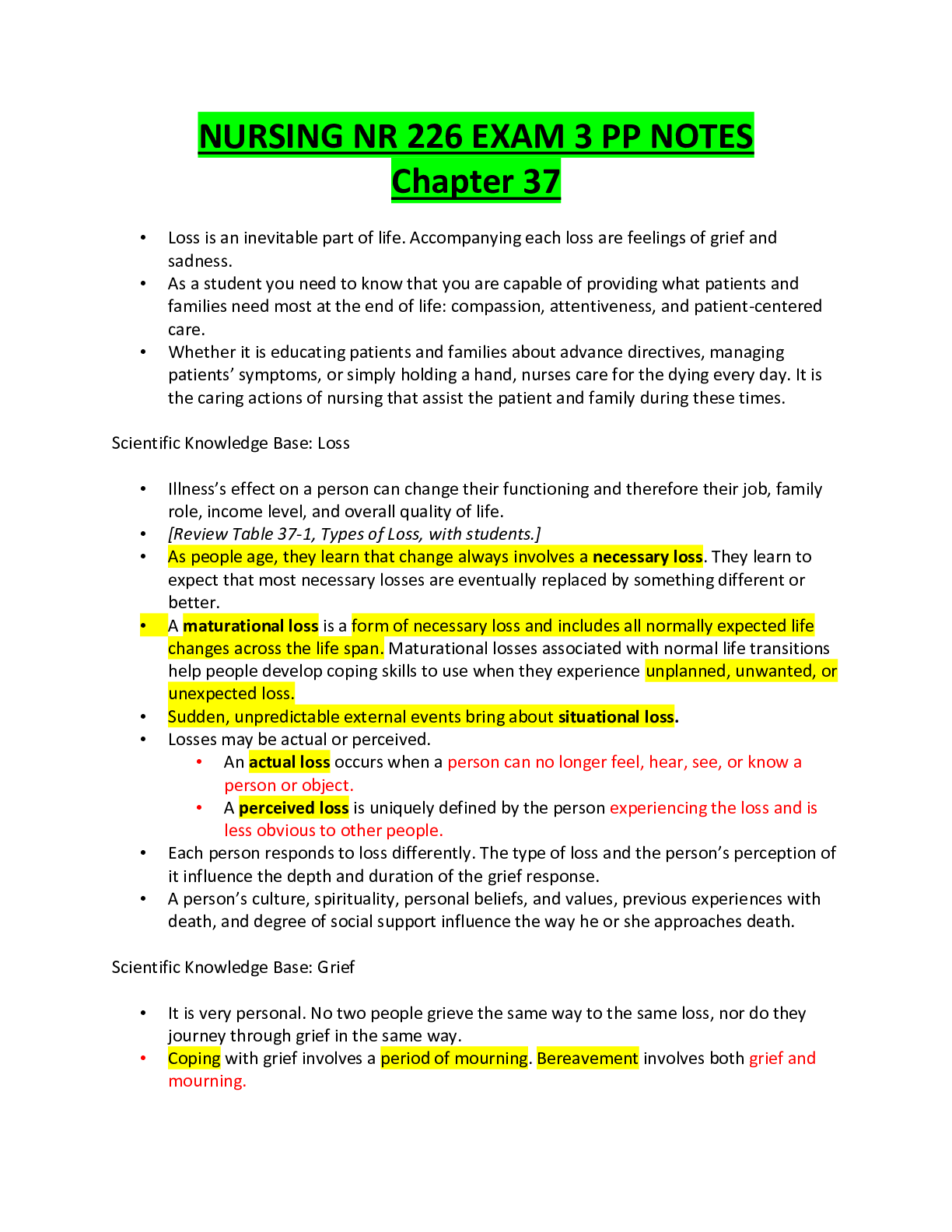
Reviews( 0 )
Document information
Connected school, study & course
About the document
Uploaded On
Mar 18, 2021
Number of pages
38
Written in
Additional information
This document has been written for:
Uploaded
Mar 18, 2021
Downloads
0
Views
43

